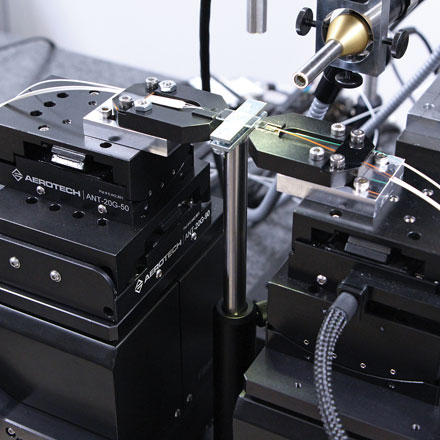 Achieving Ultralow-Loss Photonics Array Alignment
Achieving Ultralow-Loss Photonics Array Alignment
Tue, Apr 26, 2022 1:00 PM - 2:00 PM EDT
Two- and three-dimensional photonic arrays are commonly used for coupling light in photonic integrated circuits. With the increasing demand for ultra-low loss transmission in applications such as datacom, artificial intelligence (AI), virtual reality (VR), and quantum computing, the need for fast and precise alignment of photonic arrays to other devices is critical. Darrell Paul will present the current industry challenges and limitations as well as automation solutions for achieving ultra-low loss photonics alignment. Presented by Aerotech.
 Measuring Long-Wavelength Lasers with IR Cameras, Pyroelectric Scanning-Slit Sensors, and Wavelength Conversion Apparatus
Measuring Long-Wavelength Lasers with IR Cameras, Pyroelectric Scanning-Slit Sensors, and Wavelength Conversion Apparatus
Wed, May 4, 2022 1:00 PM - 2:00 PM EDT
Numerous products and techniques have been developed to enable measurement of the beam quality parameters for long wavelength light sources. Kevin Kirkham, senior manager of new business development for Ophir at MKS Instruments, presents on the types of measurement tools available for long wavelength sources and helps determine which tools are appropriate for different applications. While there are many considerations that can significantly impact the laser process, an understanding of performance qualities can ensure users see successful outcomes. Presented by Ophir.
 Expanding Implementation of Fast Optimization Technology for Photonics, Optics, and Quantum Manufacturing Applications
Expanding Implementation of Fast Optimization Technology for Photonics, Optics, and Quantum Manufacturing Applications
Tue, May 10, 2022 1:00 PM - 2:00 PM EDT
High-speed parallel alignment technology can dramatically shorten the time required to optimally align multiple optical or photonic elements, typically by 99% or more. Scott Jordan, head of photonics for PI (Physik Instrumente) L.P., shares how the fields of application have expanded from its original use in piezo nanopositioners to implementation into modular stacked-axis motion assemblies, gantry (Cartesian robot) configurations, and hexapod microrobots. This has brought the dramatic benefits of production economics to large-format applications, such as PCBs and trays. The technology is firmware-based, meaning that one intelligent command can autonomously optimize complex photonic and optical assemblies. Presented by PI (Physik Instrumente) L.P.
|
|
|
|